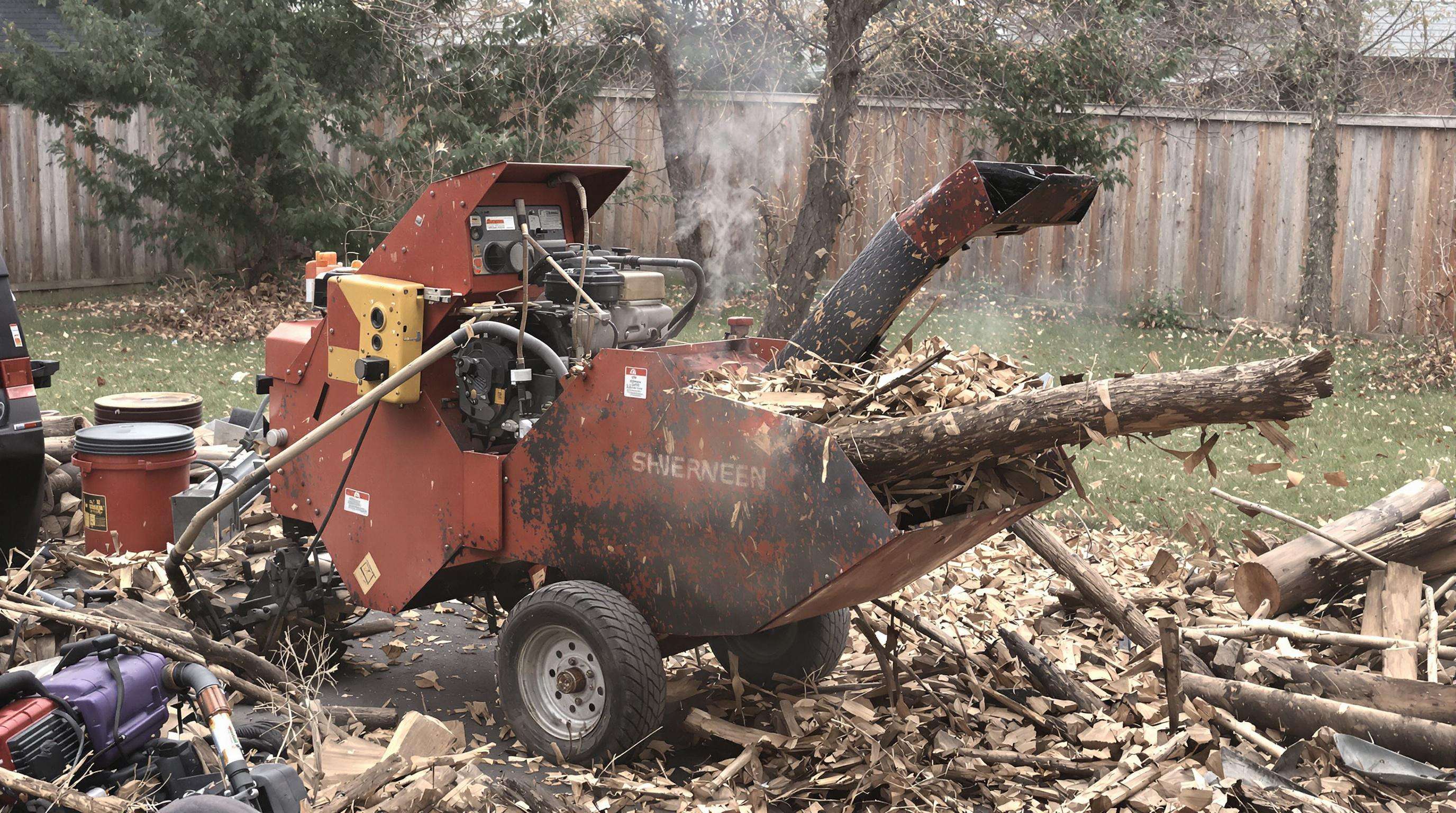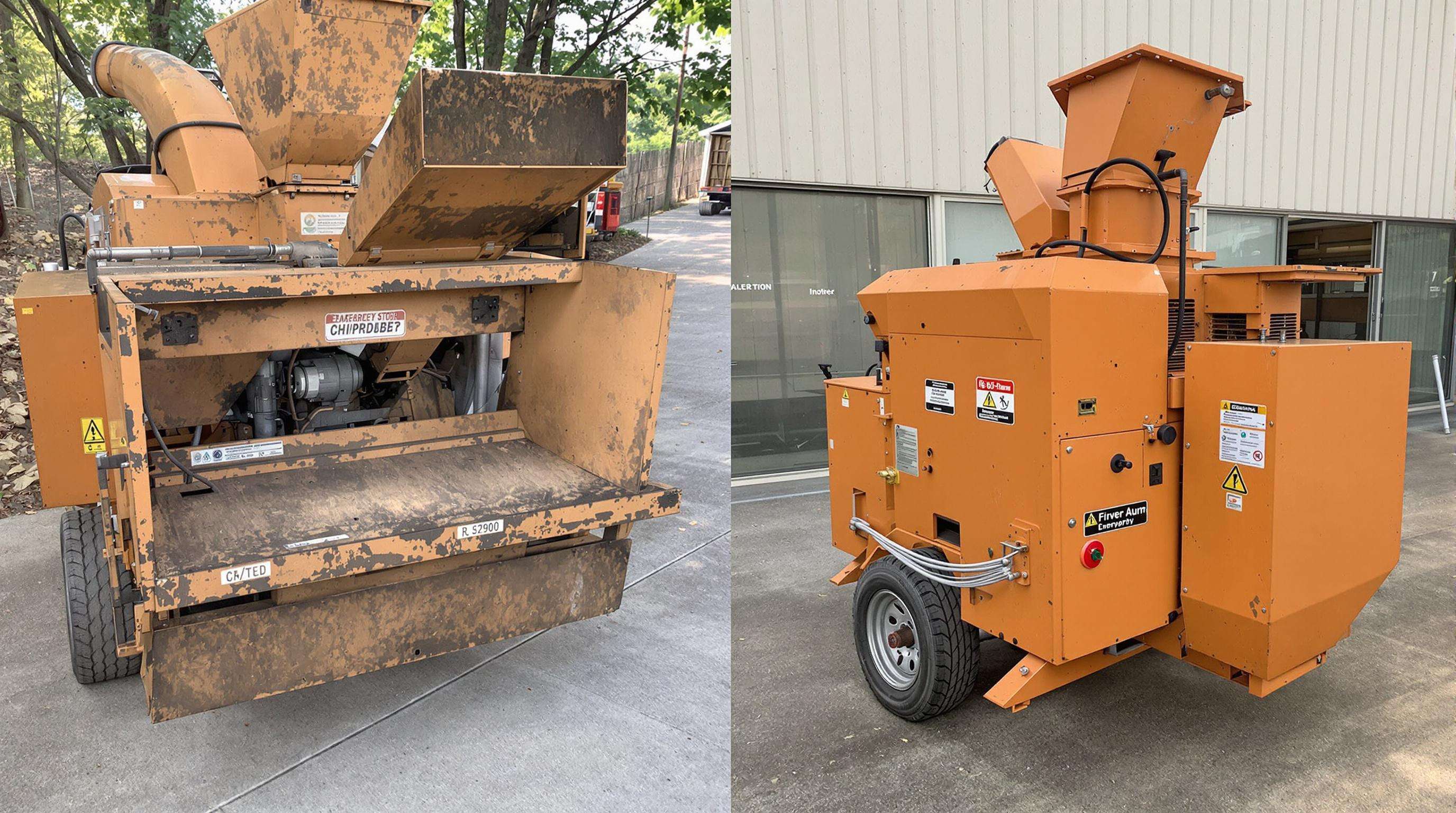Declining Power and Performance in Your Chipper Shredder

Key Indicators of Motor Efficiency Loss
Modern gas-powered models demonstrate 20% higher fuel efficiency than units over 5 years old, with torque outputs declining 1-1.5% annually under typical use. Operators notice three telltale signs:
- Extended chipping time for identical branch diameters
- Intermittent engine stalling at maximum load capacities
- 15-30% increased fuel consumption per cubic yard processed
This performance decay correlates with worn piston rings and carbon buildup in combustion chambers. A 2024 Power Equipment Study found engines exceeding 300 operating hours need 37% more maintenance to sustain baseline RPMs.
Erosion of Cutting Blade Effectiveness Over Time
Blade erosion manifests through:
- Jagged, irregular wood chips requiring secondary processing
- Vibration spikes exceeding safety thresholds
- 1.5x higher frequency of jams with fibrous materials
While regular sharpening maintains edge geometry, years of thermal stress alters the metallurgical structure. Data shows blades lose 18-22% of their Rockwell hardness after processing 50 tons of material—equivalent to 2-3 seasons of residential use.
Comparative Productivity Metrics Against New Models
Modern units process 30-40% more material hourly while using comparable energy inputs. Key contrasts include:
| Metric | 10-Year-Old Models | Current Models |
|---|---|---|
| Max Continuous Runtime | 2.1 hours | 3.8 hours |
| Avg Chips/Minute | 1,200 | 1,900 |
| Acceptable Branch Diameter | 3.1" | 4.7" |
These disparities stem from improved gear ratios and optimized impeller designs reducing material recirculation by 61%.
Inadequate Chipping Capacity for Current Needs
Assessing Branch Diameter Limitations (Gas vs Electric Models)
Gas-powered chippers typically handle 30-50% larger branch diameters than comparable electric models. Key limitations emerge in three areas:
| Factor | Gas Models | Electric Models |
|---|---|---|
| Max Branch Diameter | 3-5 inches | 1.5-2.5 inches |
| Engine Power | 8-15 HP | 2.5-5 HP equivalent |
| Maintenance Needs | Higher | Lower |
Equipment strain increases exponentially when processing materials near maximum capacity.
When Disc/Drum Systems Become Obsolete
Legacy disc-style cutting systems struggle with modern challenges:
- Material Processing Speed: New helical blade systems complete tasks 40% faster
- Jam Frequency: Outdated models experience 3x more operational stoppages
- Energy Efficiency: Modern cutting geometries reduce power consumption by 22%
When maintenance intervals shrink below 25 operating hours, total ownership costs often exceed new equipment pricing.
Safety Features Lagging Behind Modern Standards

Critical Missing Protections in Older Chipper Shredders
Older chipper shredders often lack fundamental safety mechanisms now standard in modern equipment, such as emergency stop triggers and automatic jam detection. Unlike newer models with infrared anti-restart technology, legacy systems may restart automatically after power interruptions.
Industry research reveals 43% of wood processing accidents involve equipment over eight years old (ASCE 2023). Retrofitting older machinery with modern protections proves prohibitively complex and costly.
Maintenance Frequency Versus Safety Compromises
Frequent repairs on aging chippers often lead to safety shortcuts. For example, repeated disassembly of cutting chambers can warp safety guards, reducing their effectiveness by 60% over five years.
Annual maintenance for a 10-year-old gas chipper averages $520—enough to fund 40% of a new electric model’s down payment. Modern designs eliminate 78% of these intervention points through sealed components.
Excessive Downtime and Repair Costs Accumulation
Breakdown Frequency Analysis by Operating Hours
Industrial chipper shredders averaging over 500 operating hours annually experience 2.3x more unplanned outages than units under 300 hours. Critical components show 72% failure probability after 800 hours.
Cost-Benefit Calculation: Repairs vs Replacement
Emergency repairs cost 40-60% more than scheduled maintenance. When facing recurring issues, a two-year repair cost exceeding 50% of a new unit’s price signals replacement urgency.
Obsolescence Challenges in Replacement Parts
78% of chipper shredders over eight years old encounter discontinued components, forcing costly custom machining. Average lead times for obsolete parts exceed six weeks—23% longer than 2020 averages.
Evolving Needs Outpacing Legacy Equipment Capabilities
Matching New Commercial Demands with Modern Chippers
Today’s commercial landscaping operations process 40% more material daily than a decade ago. Contractors now require continuous operation capabilities exceeding 6 hours—a threshold where 80% of older equipment shows accelerated wear.
Advanced torque management systems in new chippers maintain consistent rpm under load fluctuations, critical for mixed green waste.
Technological Advancements in Top Chipper Brands
Contemporary designs integrate:
- Hydraulic blade tensioners maintaining optimal cutting geometry 34% longer
- Noise reduction engineering bringing operation levels below 85 dB
- Carbon-fiber reinforced composite housings reducing weight by 25%
Smart diagnostic systems predict maintenance needs with 92% accuracy to prevent unplanned downtime.
FAQ
Why does my chipper shredder consume more fuel now than before?
The increase in fuel consumption is likely due to the significant drop in motor efficiency, often caused by worn piston rings and carbon buildup in the combustion chamber as the engine ages.
How often should blades be sharpened to maintain efficiency?
Regular sharpening is important to maintain edge geometry, but note that over time, thermal stress will alter the metallurgical structure of the blade, leading to efficiency loss despite regular sharpening.
Is it more cost-effective to repair my old chipper shredder or replace it?
If your two-year repair costs are more than 50% of the price of a new unit, it may be more cost-effective to consider replacing your old equipment.
What are the main safety features missing in older chipper models?
Older models often lack essential safety mechanisms such as emergency stop triggers, automatic jam detection, and infrared anti-restart technology that are now standard in newer models.
What are the advantages of modern chipper shredders?
Modern chippers offer increased material processing speed, energy efficiency, and safety features, as well as advanced technological integrations like smart diagnostics and noise reduction engineering.
Table of Contents
- Declining Power and Performance in Your Chipper Shredder
- Inadequate Chipping Capacity for Current Needs
- Safety Features Lagging Behind Modern Standards
- Excessive Downtime and Repair Costs Accumulation
- Evolving Needs Outpacing Legacy Equipment Capabilities
-
FAQ
- Why does my chipper shredder consume more fuel now than before?
- How often should blades be sharpened to maintain efficiency?
- Is it more cost-effective to repair my old chipper shredder or replace it?
- What are the main safety features missing in older chipper models?
- What are the advantages of modern chipper shredders?

